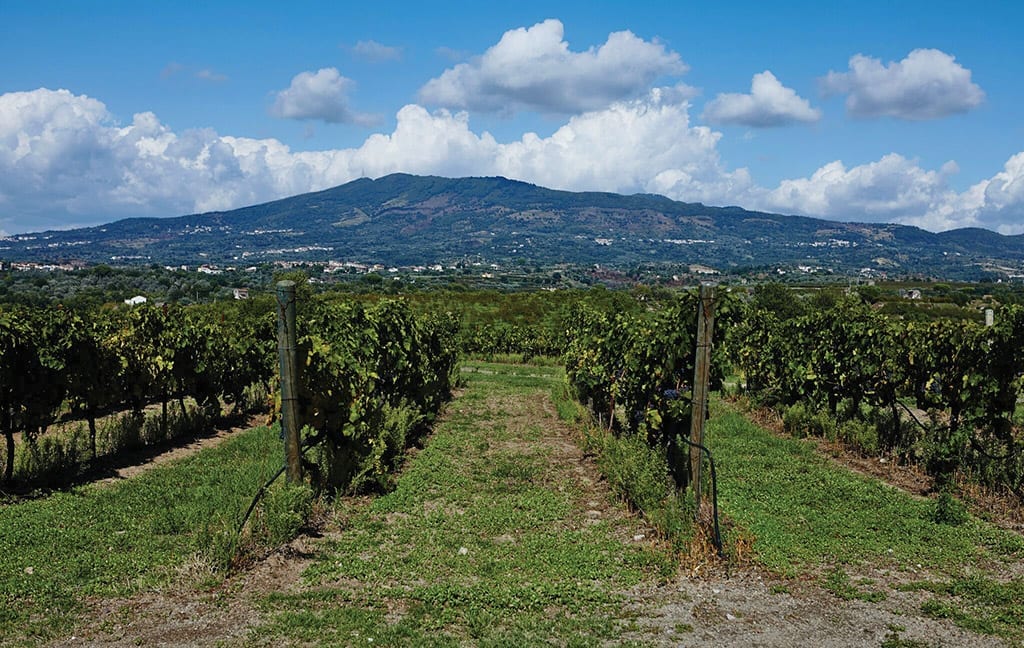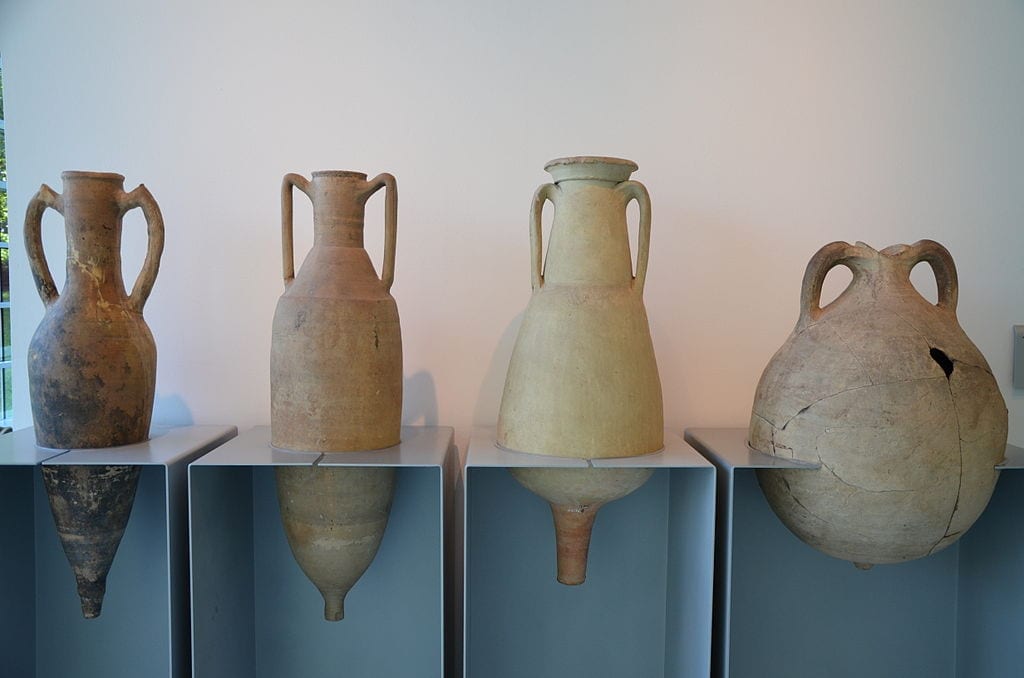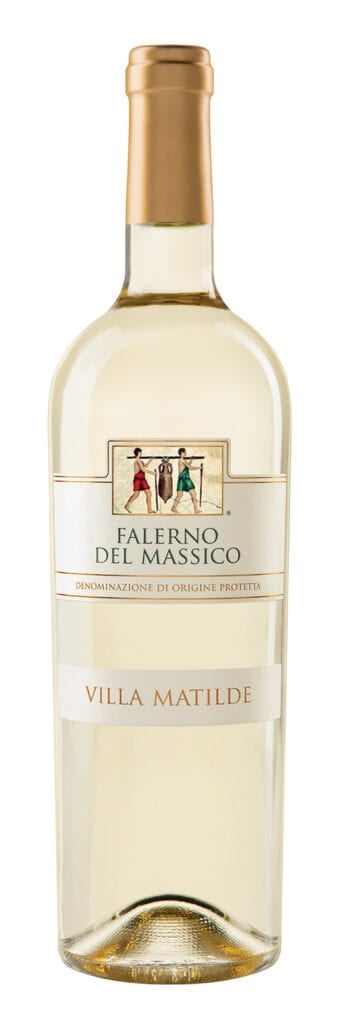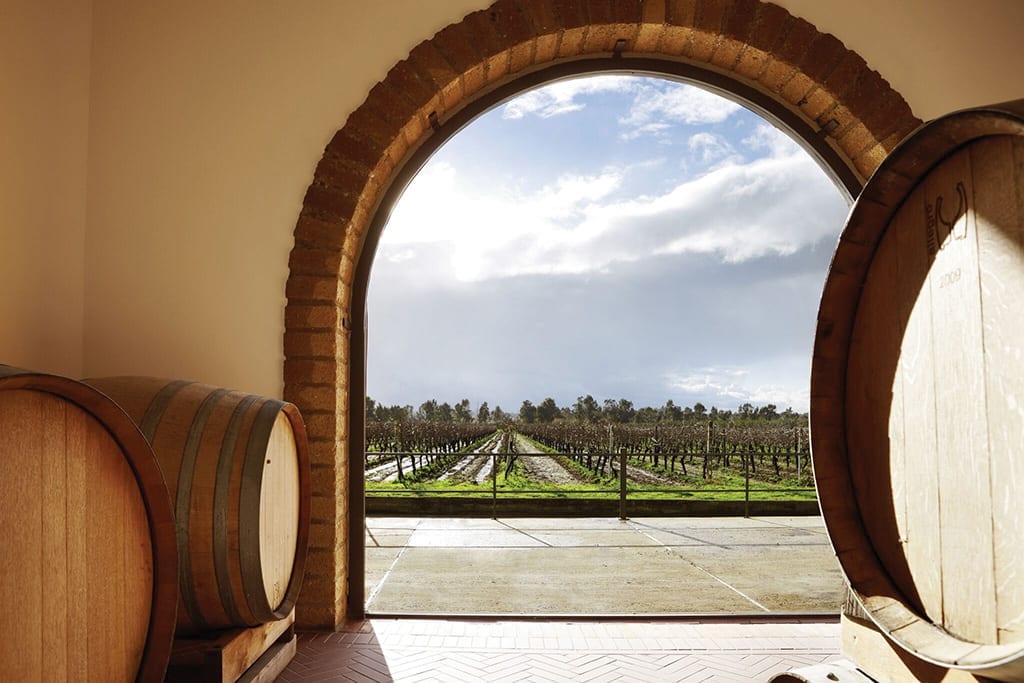If we were in the year 50 BC and we were high up enough (in society) to have the luxury to sit at the table with the mighty Roman General Gaius Julius Caesar along the roads of one of his many campaigns of conquest of the Gauls, we’d be sipping on the glorious and world-renowned Falernum wine.
Falernum: Where Did It Come from, Where Did It Go?
Falernum was the most expensive and sought after wine of the Roman Empire and has been documented as far back as the 1st century BC when it was considered a commodity, almost a currency. Given that it was a must-have on the tables of the rich, it became a status symbol, and having several amphorae was a measure of one’s social status. Evidence of this was the funeral epitaph of Caio Domizio Primo, who lived in Ostia in the 4th century, which read:
“It is I in this tomb, the celebrated Primo. I ate oysters of lake Lucrino, I often drank Falerno. Over the years, the thermal baths, the wines, and making love all grew old with me.”
The origins of Falernum are shrouded in ancient Roman legend and myth. It is said that Bacchus, the god of wine, appeared in disguise on the slopes of Mount Massico in Campania and was given hospitality by an old and humble farmer named Falerno. Despite his modest means, the old farmer welcomed the stranger with everything he had: fruit, honey, and milk. Unfortunately, he had no wine to offer. Bacchus, touched by his generosity, rewarded him by turning the milk into wine and as a gift to mankind, turned the slopes of Monte Massico into lush vineyards.
Despite the myths, the wine, Falernum, really existed and was the greatest wine of antiquity.
For the Romans, it was the greatest and most sought-after wine of all, a wine for emperors and a true “first growth” of its time. No other wine of the Roman period boasts such a large number of Latin authors and poets who sang its praises, notably Catullus, Cicero, Virgil, Varro, Horace, Titus Livious, Ovidius, Martial, Petronius, and naturally Pliny the Elder.

Falernum was exported to most of the provinces of the Empire. Amphorae that held Falernum have been discovered in France, Germany, Britain, and North Africa. The vineyards were planted on the Eastern side of Monte Massico in the area known as Ager Falernus (part of the modern-day Falerno del Massico DOC). A price list found on a bare wall in the ruins of ancient Pompeii shows that Falernum was four times more expensive than any other wine. Moreover, there were three categories of Falernum corresponding to quality levels and to specific vineyard zones (one might call it the original IGT, DOC, and DOCG). The most prestigious and sought-after of the three was Falernum Faustianum produced at mid-level elevation on hilly slopes. Falernum Caucinum was the second tier, hailing from the highest elevations on the hills. Lastly, a wine labeled simply Falernum was produced from low-lying vineyards.
A Wine that Catches Fire in the Glass
What exactly was Falernum? Most experts agree that was a white wine. Some have suggested that Falanghina, Greco, and even Aglianico may have contributed to the blend (although this remains unknown). Like other wines of the time, Falernum was very high in alcohol. Pliny the Elder even mentioned that Falernum Faustianum was the only wine that could catch fire if it approached a flame. The wines were exposed to sun or smoke. Honey, spices, resins, and even seawater were added to soften and prolong the wine’s life. It was usually aged for long periods in clay amphorae (usually more than 10 years). The resulting wines were powerful, strong, dark amber in color, and needed to be diluted with water. There were three main styles of Falernum: Austerum (strong and less overtly sweet), Dulce (sweet), and Tenue (light).

The fortunes of Falernum somehow mirrored the destiny of the Roman Empire. With the fall of the Empire in the 5th century AD, the wine gradually lost much of its prestige and importance. The wine continued to be produced, albeit in much smaller quantities (excerpt from the Wine Scholar Guild book The Wines of Central & Southern Italy).
The wines were aged for a very long time in the “Fumarium,” the garret of the “Domus” where all the smoke produced by the house fire was continuously sent.
“Falernum” Today
The Falerno del Massico DOC was created in 1989 with the arduous intent to revive the two-thousand-year-old legacy of the ancient Roman first growth appellation, Falernum. In fact, the DOC corresponds in large part to the same wine-growing district from which the famous Roman wine originated.
The Falerno del Massico DOC lies along the border with Lazio in the region of Campania between the extinct volcano of Roccamonfina (north) and the coastal town of Mondragone (south). Vineyards are planted all around Monte Massico and on the foothills of Roccamonfina. The soils are composed of a layer of volcanic top-soil atop a limestone sub-soil. Falerno del Massico DOC is an Aglianico-based wine in which a small proportion of Piedirosso is often added. These wines tend to be more supple, velvety, and less austere than Aglianico produced in the inland appellations.

Severus, fortis, ardens, was how the ancient Falernum wine was described. The most historical of wines disappeared at the beginning of the 1900s (due to phylloxera) and was brought back to life in 1975 by the commitment and hard work of passionate Roman history buff Francesco Paolo Avallone. After several years of research in collaboration with the University of Napoli, the few pre-phylloxera vines that had survived the devastation were selected and propagated, and Francesco founded the Villa Matilde winery in Campania. Today, Villa Matilde is run by his daughter Ida and her two brothers Salvatore and Francesco Paolo. They produce Falerno del Massico Bianco DOP from 100% Falanghina, and Falerno del Massico Rosso DOP from 80% Aglianico and 20% Piedirosso, among other traditional Campanian wines.




